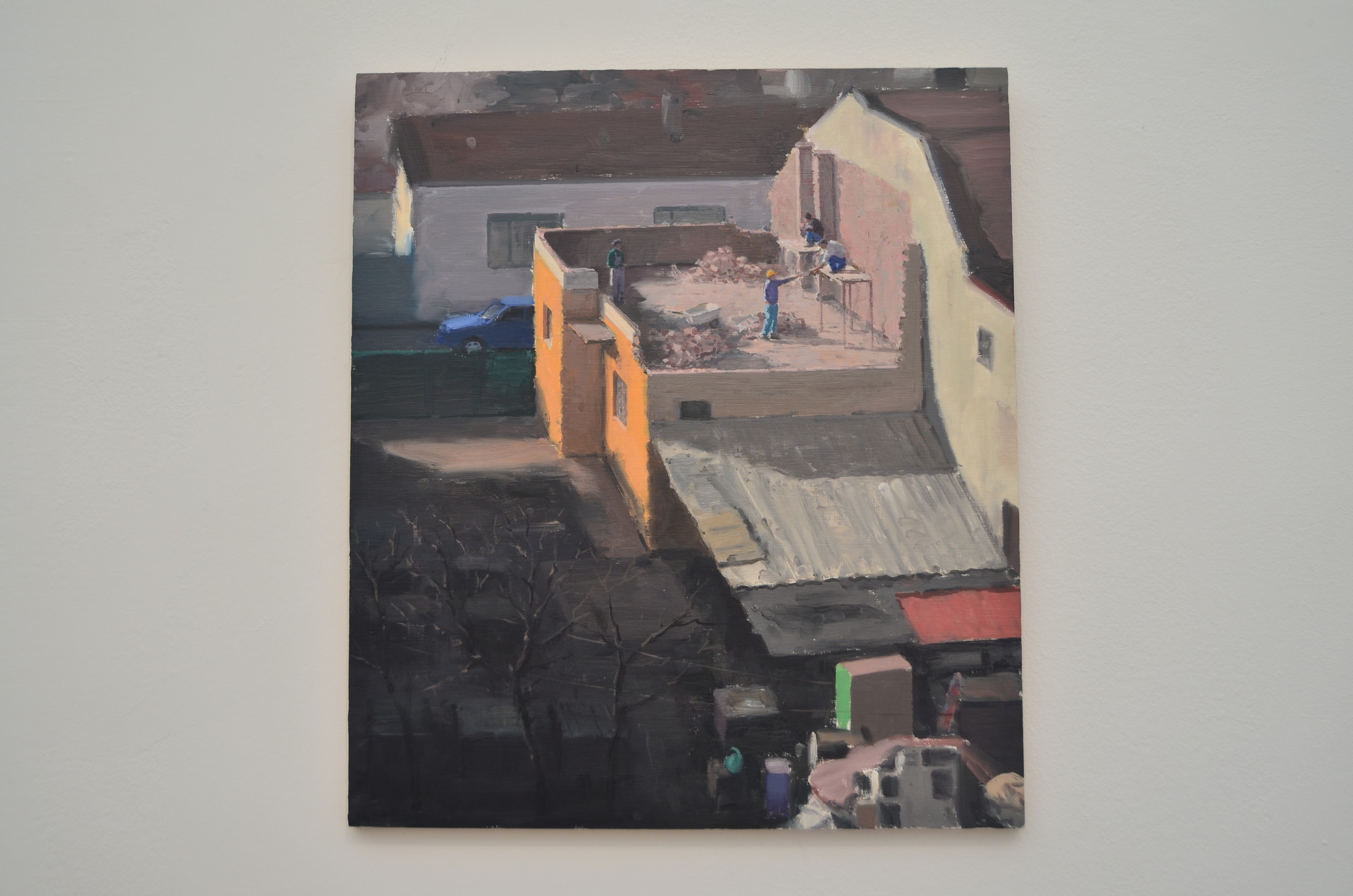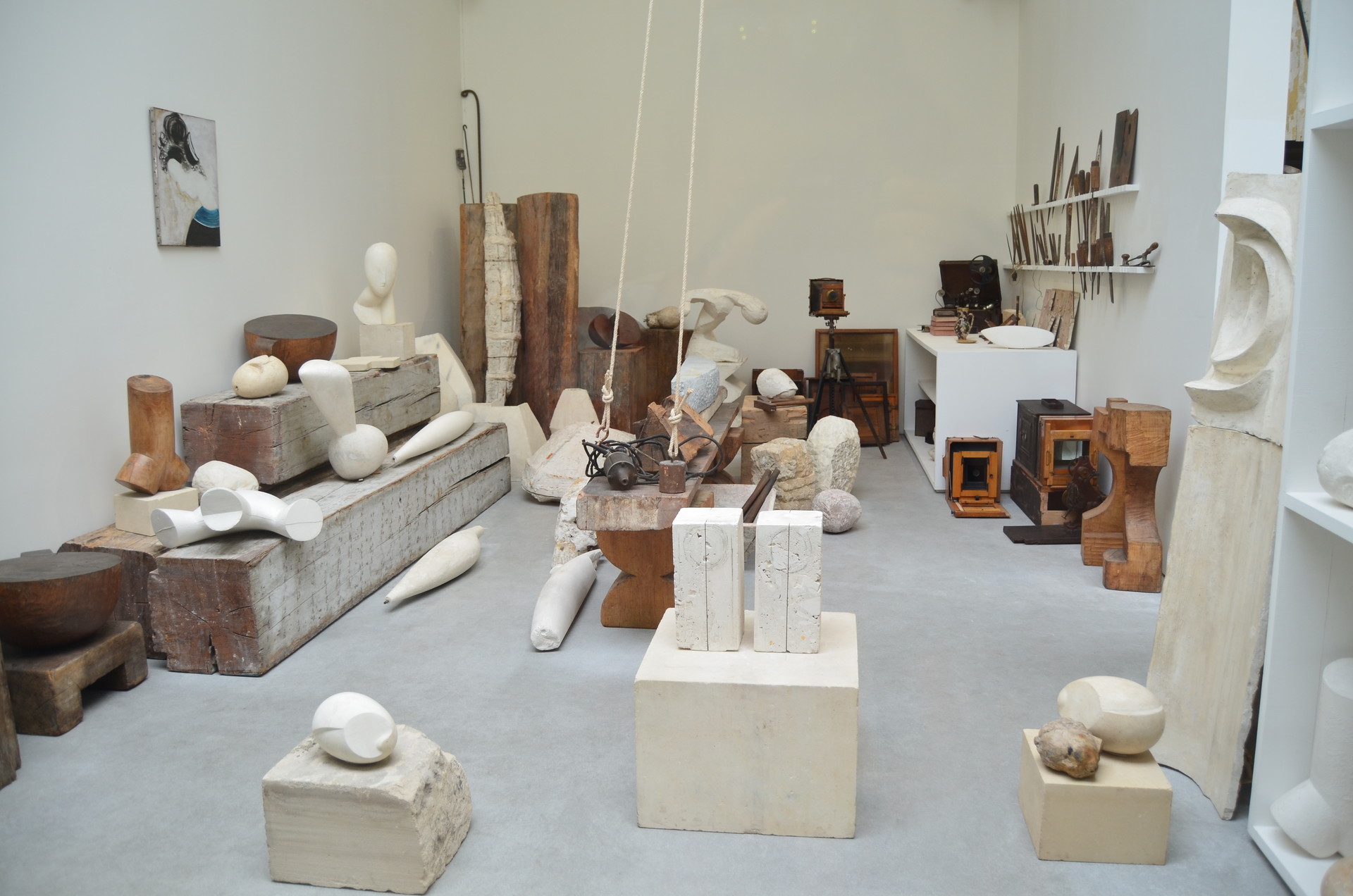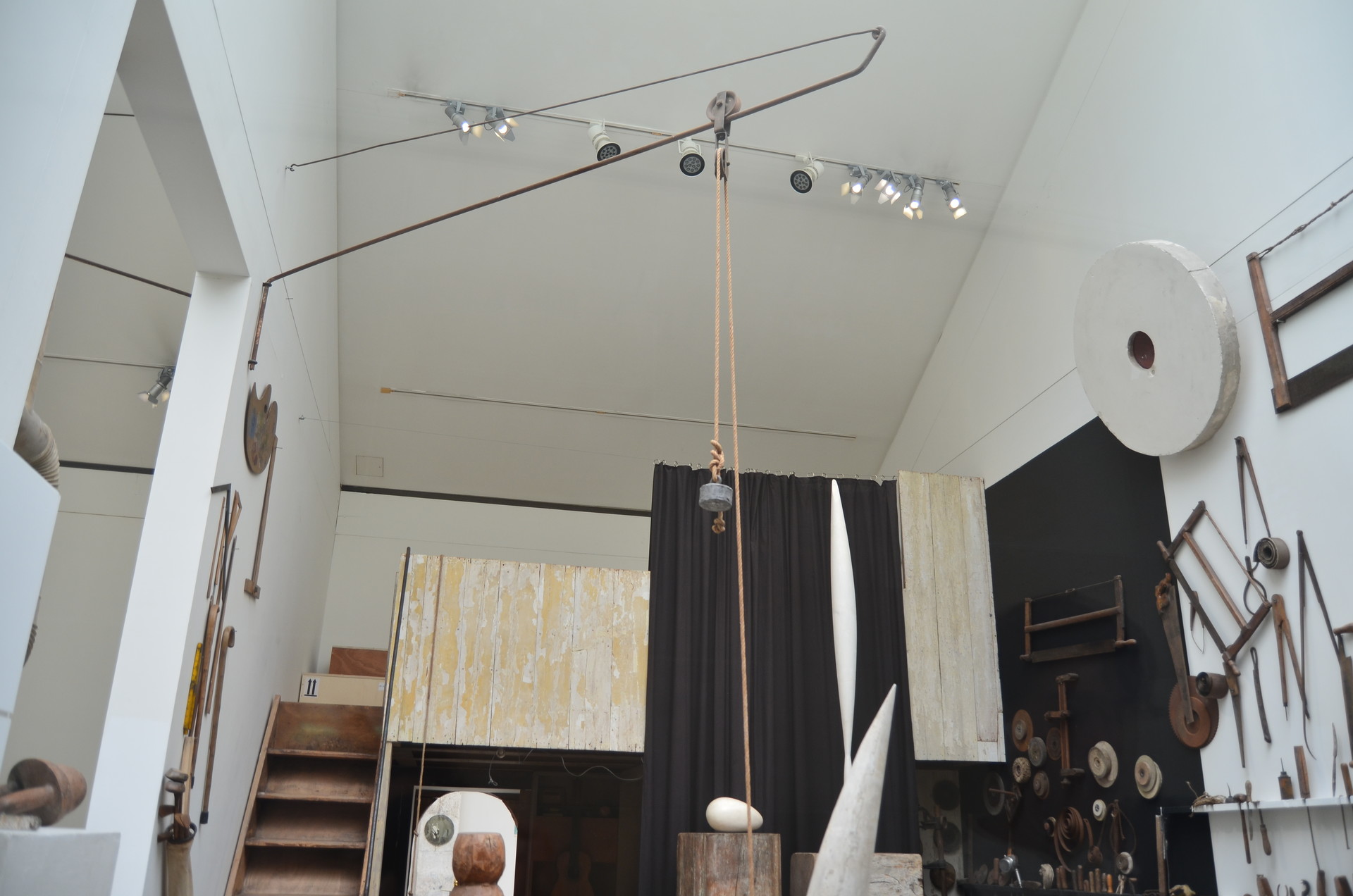Atelier Brâncuși
I am in Paris in front of the Center Pompidou which hosts the Museum of Modern Art, one of the largest in Europe of this kind.

I start photographing the building and walk to the left and to the right of it. The construction is impressive and I am particularly curious about its specific exterior appearance.
At one point I see written on a smaller building located to the left of the big museum Atelier Brâncuși and I am a little blocked and I wonder what is there.

The reason why I'm a little shocked, but in a good sense, is because Brâncuși is an artist of Romanian nationality, like me.
Where is the museum located?
Atelier Brâncuși belongs to the Musée National d'Art Moderne housed in the Centre Pompidou in the 4th arrondissement of the city, more precisely in Place Georges Pompidou.

The building of Atelier Brâncuși is not inside the center, but separated from it. If you stay face to face to the Centre Pompidou and go to the left you will find the location that I talk about.
How much it costs to visit the museum and when is open?
Admission is free! and the small museum is open from 2 PM to 6 PM each day, except Tuesday and May 1st.
Who is Constantin Brâncuși and why is he important for the art world and also for me?
I know about the creation of this artist for a long time as well as about the fact that he lived and worked in Paris for most of his life, but until now I did not knew about the existence of a museum dedicated to Brancuși exactly here.
I become very excited and soulful about visiting this museum, as well as very grateful for the fact that Constantin Brancusi's work is appreciated, respected and treated as it should be.
Although I was planning to enter Pompidou Center, I change my mind and go first to see Brancuși's workshop.
Before I talk about what I see inside the museum, I mention a few essential words about who Constantin Brâncuși is.
The artist was born in Romania at the end of the nineteenth century where he attended the courses of the School of Fine Arts in Bucharest.
At the beginning of the 20th century, he settled in Paris in same studios located in the 15th arrondissement, where he created his greatest works.
From the leaflet received at the entranceof the museum I know that one year before his death, in 1956, Brâncuși donates the things from his workshop to the French government, on the condition that the National Art Museum will reproduce his studio just as it appears after his death.
Going inside the world of Constantin Brâncuși
The reproduction of the studios I visit has been made by the architect Renzo Piano. The rooms that are arranged in the form of Brâncuși's atelier are open to the public, but protected by a complete glass windows.

The first view that I get as I enter the museum and look through the glass contains three big columns which remember me of "The Infinity Column", a monumental work belonging to the artist that I saw some time ago back in Romania, more precisely in Târgu Jiu city, which is also the place of his birth.
The atmosphere created by the simple forms of the sculptures as well as the range of colors restricted to a few shades of gray, brown or yellow is soothing, peaceful, clear and clean. The materials that the sculptor often uses are the wood and the marble.
Everything I see puts me in a state of contemplation regarding to the meaning and intentions that Brâncuși had when he did all of these beautiful things. .
In addition to the shapes of the columns, other forms that I still recognize and which are more well known are those of "The bird in space" and "Miss Pogany".


I sit on a bench and look inside the two parts of the studio. I try to look at each piece of sculpture separately to distinguish the representation of each one, but I realize that what Brâncuși does cannot be viewed separately, and the studio itself becomes a great sculpture like a whole installation.
It is known that the artist attaches great importance to the relationship that is formed by the way the sculptures interact with each other in the space in which they are located and, probably because of this, Brâncuși wants so much to display his works in front of the public just as they are arranged in his studio.

The only one missing from this space is the artist himself working on his sculptures.
Hearing another Romanians
Suddenly I start to hear some people speaking Romanian.
A mother and her two daughters look at the information panels that accompany the rooms. Here is represented a kind of map with the exhibited works and their names. They talk about Brâncuși and his works with a great admiration for his work.
I do not speak to them, but I listen to their words and I am very pleased that Romanians come here to watch and understand his works. For a few minutes I feel as if I have come back home, in Romania, both because of Brâncuși's works and the women who continue to speak Romanian with each other.
Ciprian Mureșan and Șerban Savu have also artworks exhibited here
I remain for a long time to look at the works of the Romanian artist, and when I leave from here I encounter the work of another Romanian artist exhibited on one of the walls.

Ciprian Mureșan is the author of the work that represents the portrait of the most important Romanian poet, namely Mihai Eminescu.The head of this man is multiplied in a relief cast in plaster, wax and resin.
I go ahead and find other more works signed by Ciprian Mureșan.


There are several drawings made in graphite on paper made by the artist for a book - from what I can understand.
I also find paintings belonging to Șerban Savu, another Romanian artist and I realize that only works created by Romanian artists are displayed in this museum.


I find out from the informative labels that the presence of Savu's paintings here is possible due to the close artistic connection that the two of them share.
Anyway, the presence of Romanian artists here gives me hope in terms of The Romanian Art in general.
Going deeper into Atelier Brâncuși
I continue my journey and discover the last room dedicated to Constantin Brâncuși. Here the visitors are introduced even more into the inside world of the artist's studio by presenting the process needed to develop the artworks. Besides the works there are presented many tools and possible work situations.



This room really gives me the impression that what I see is the interior of Brâncuși's studio. Everything seems to make sense, all things are put in their place.
His concern for the relationships that arise between all the objects around him is obvious and defining for his artistic style.
Is this place worth visiting?
If you are going to explore the Center Pompidou then it is definitely worth entering the "Atelier Brâncuși" atmosphere.
The museum is not large and due to the fact that it concentrates only on the work of a single artist, it can be much easier and more pleasant to watch compared to other galleries where many works belonging to various artists are exhibited which can be confusing and tiring.
